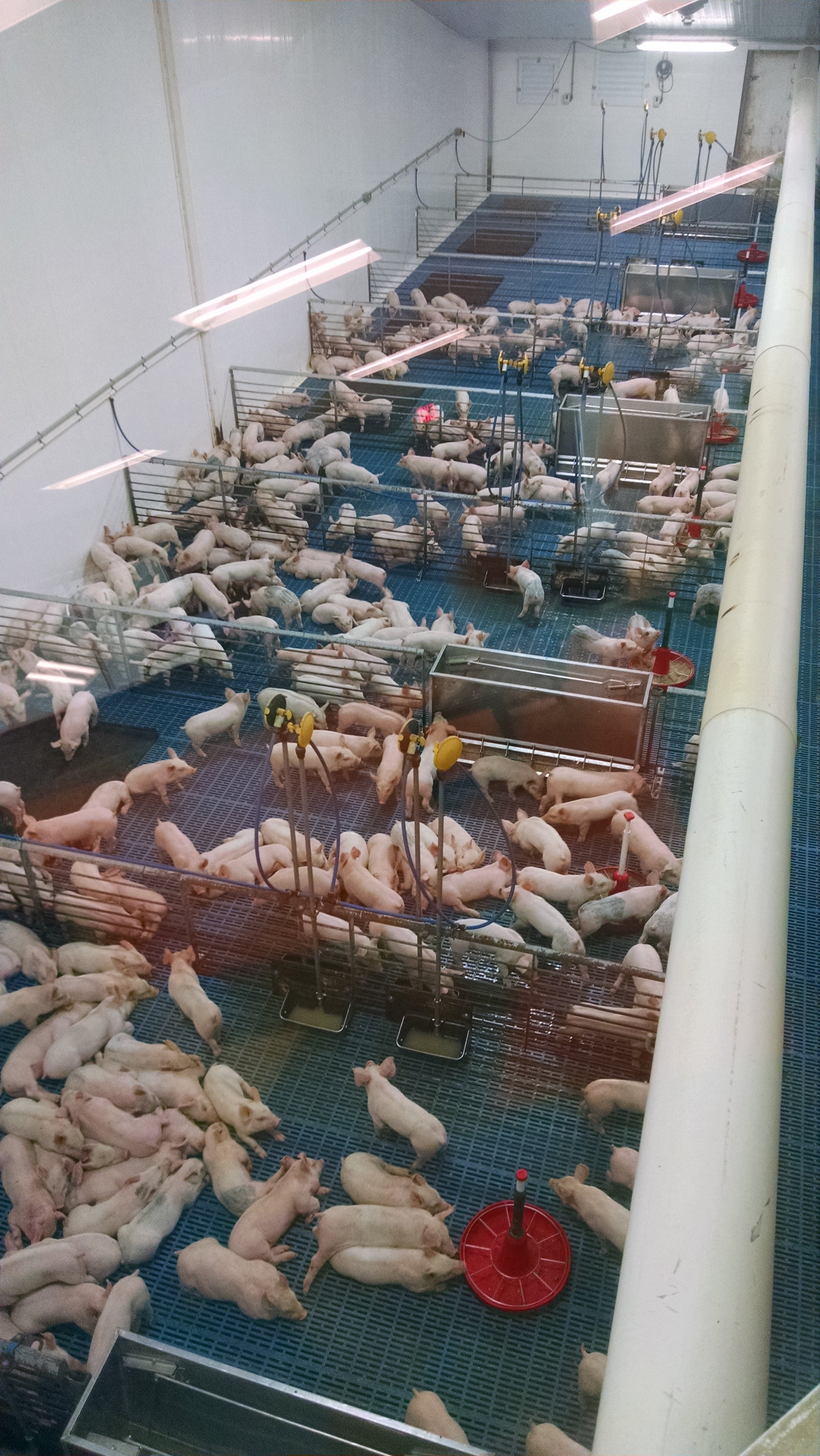If there’s one thing I wish more people would do, it’s visit farms. Most of our country has lost an intimate connection with the way our food is grown because they don’t grow it (raise it, slaughter it, or even cook it) themselves. When you understand the life cycle of food – a leaf, a fruit, an animal – it encourages appreciation, balance, and a sense of connection that is disruptive to the cycle of overeating and food waste that our world is increasingly embracing.
Since I was in Chicago for a wedding this past weekend, I decided to add a day to the trip to visit a huge midwestern dairy farm that has recently (2013) added swine production. This is the peak of agri-tourism: a campus of buildings to explore and more information than your head can hold at every turn! There’s a restaurant (closed on Mondays, unfortunately), a cafe that sells ice cream and cheese (with floor to ceiling windows looking into their yogurt processing), a birthing barn, a 4D movie theater, an indoor ropes course, and a big garden (that was mostly dirt – assuming it was full earlier)!. Due to the timing of our drive, we didn’t get to do a dairy tour, but did hop on a pig tour.
I was floored. Surprised at not only some of the methods they use, but also that you could see every part of it. The whole facility is designed around allowing visitors the ability to look through huge windows down into the barns – I’ll let you browse the pictures to see what I saw:

“Main campus” – where you go to start the tours before you’re shuttled to the operating farm
Indoor ropes course – for kids and adults! I like that there are lots of opportunities to be physically active on the trip here, though we didn’t have time for this.
The operational part of the pig farm – a large building built on top of the barns so you can see down into them.
Pigs being artificially inseminated in the background, post insemination in the foreground, where they stay until they have a confirmed pregnancy

In the center of every observation deck there are interactive displays. Here, you can give a fake pig a fake ultrasound.
Then the sows deliver in a farrowing crate, where they stay for 21 days (!!) eating and feeding their babies. The average litter here is 14, and the farm’s record is 27 (!!!). The sows can stand and lie on either side, have food and water always available at their nose, that pipe leading down to the front of the pig delivers fresh air. The crate is to prevent them from laying on a piglet and squashing it to death – apparently a common situation? I forgot to ask the tour guide how often that happens, but found this conversation on a forum.

They bring a new born piglet (that’s the umbilical cord hanging down) up to a window while the guide talks about the birth cycle. Minutes old, and very cute!

As they grow, they’re put in groups with other pigs of their age and size to reduce bullying.

Even bigger! All the floors they walk on are slatted so the manure drops down and is removed to use as fertilizer as crops, and run through a digester to create energy. The pigs move from this stage to another farm where they’re raised to slaughter weight.

There were a lot of high tech displays – this one puts you into a virtual pig pen, and the computer pigs actually move around in response to where you stand.
What do you think?
The reason I encourage people to visit farms is because everyone seems to have an opinion about food, but very few actually try to see things firsthand, and even fewer are doing the actual work of it. In the past few years I’ve become a lot more conscientious of how often I eat meat and where I get it from, and the truth is that most meat in our country is raised pretty much like this. I do believe that all of these pigs are clinically healthy and well-monitored – the farm and barns were so clean the word “sterile” came to my mind more than once – but they live their lives from birth to death in an enclosed room on a concrete slab. They have other pigs around them to play with and snuggle with, but not very much space to roam or root or explore (one display mentioned that an adult pig is about as smart as a 3-year old human). As an American consumer, the only real power you have to change systems like this (unless you want to go into the business!) is to choose carefully how you spend your money. It’s the reason I encourage people to talk to farmers, support local farms they can visit, and be willing to spend a little more on meat if they choose to eat it.
Share your thoughts! Does this bother you? Does it change anything about the way you want to eat?











Sarah! Thanks for sharing this! I agree, people need to understand where their food (especially meat) is coming from! I do also wish that they got to roam around but this post definitely helps understand the cycle better!!!
Most animal establishments won’t let you tour them, so I’m glad they do – definitely couldn’t imagine spending my life like that, though!